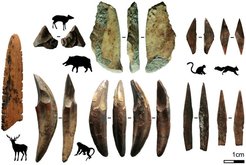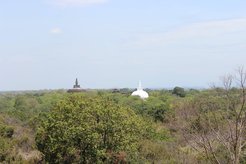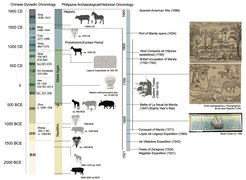Deep Human History in the Tropics
This project seeks to resolve the timing and nature of human adaptations to tropical forests in different parts of the world. It can be divided into four main sub-project areas, covering the time depth of our species’ interaction with these environments, with corresponding methodological approaches.
On the tropical origins of our species

It was once thought that our species would have avoided tropical forests during its expansions within and beyond Africa, instead following coastal ‘highways’ or grassland corridors. This sub-project applies isotopic, zooarchaeological, and microbotanical approaches to Pleistocene human sites in South Asia, Island Southeast Asia and the Pacific, and the Neotropical forests of Central America and the Amazon Basin, to explore the earliest interaction of our species with tropical forests beyond Africa.
These same methodologies will also be used to explore how climates and environments varied during periods of human occupation. Where possible, we are particularly interested in exploring how the adaptations of other hominid species (e.g. Gigantopithecus, Homo erectus), varied compared to those of our own species, and whether Homo sapiens demonstrates a unique ability to adapt to tropical environments.
Farmers in the forest
The impacts of modern industrial farming complexes and monoculture on tropical forests have often led to assumptions that food production is impossible in these habitats, leading to soil degradation, clearance, or vulnerability to natural hazards. While acidic and hydrologically active soils have often made investigation of agriculture in the tropics challenging, microbotanical analysis, plant DNA, and stable isotope analysis of sediments, plants and fauna from archaeological and palaeoenvironmental contexts have proven promising.
This sub-project seeks to continue to apply these novel methodologies to explore the origins of tropical food production. This includes exploration of Indigenous animal domestication in the Neotropics, the expansion of millet agriculture and the origins of oil palm cultivation in West and Central Africa, and long-term perspectives on animal and plant management in South Asia. Cooperation with the Max Planck Institute for Developmental Biology is exploring the origins and trajectories of human use of certain key crop and tree species.
Ancient tropical urbanism

The ruins of Classic Maya centres and Angkor Watt have often been used to further stereotypes that ancient tropical cities were doomed to collapse. However, recent advances in remote sensing, and particularly LiDAR (Light detection and ranging) technology, have demonstrated the sheer scale of human settlements in tropical forests in the past. These vast cities have even been referenced by urban planners as a potential route to more sustainable cities in the future.
This sub-project will utilise one of the first dedicated LiDAR facilities for archaeological remote sensing in tropical forest environments. By creating a LiDAR facility for dedicated archaeological use, the group is working with the EFEO to initiate novel surveys in tropical areas where LiDAR has yet to be applied (e.g. tropical Africa, Island Southeast Asia, the Neotropics), and to use this approach to contribute to the fields of ecology, urban planning, landscape geography and heritage management both within and beyond the tropics.
Europe in the tropics
Given the ample evidence hinted at above for past human presence in the tropics, it begs the question as to why we today imagine these environments to be ‘pristine’. The answer lies in the last 500 years of European interaction with tropical forest environments. From Iberian presence in the 15th century, the tropics were faced with the arrival of new diseases, and new, invasive forms of settlement and administration. The processes of colonialism, imperialism, and Indigenous economic and political resistance have become key areas of research in the Neotropics. However, experiences elsewhere in Africa, Asia, and the Pacific have been comparatively neglected.

This sub-project aligns with the work being done as part of the ‘PANTROPOCENE’ ERC project to explore how European arrival impacted societies and economies in these other parts of the tropics. This includes using palaeoenvironmental records to explore how changes in population density and economic activity varied across the tropics during the colonial period. Meanwhile, isotopic analysis of human and animal remains, alongside LiDAR studies, can be used to explore how colonial connections and power altered diets, trade, and settlement patterns.


